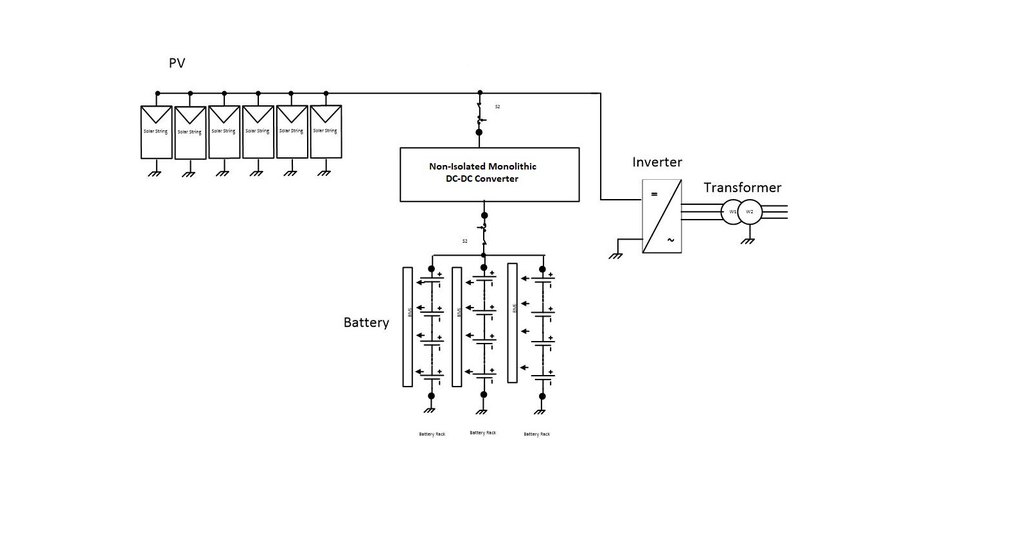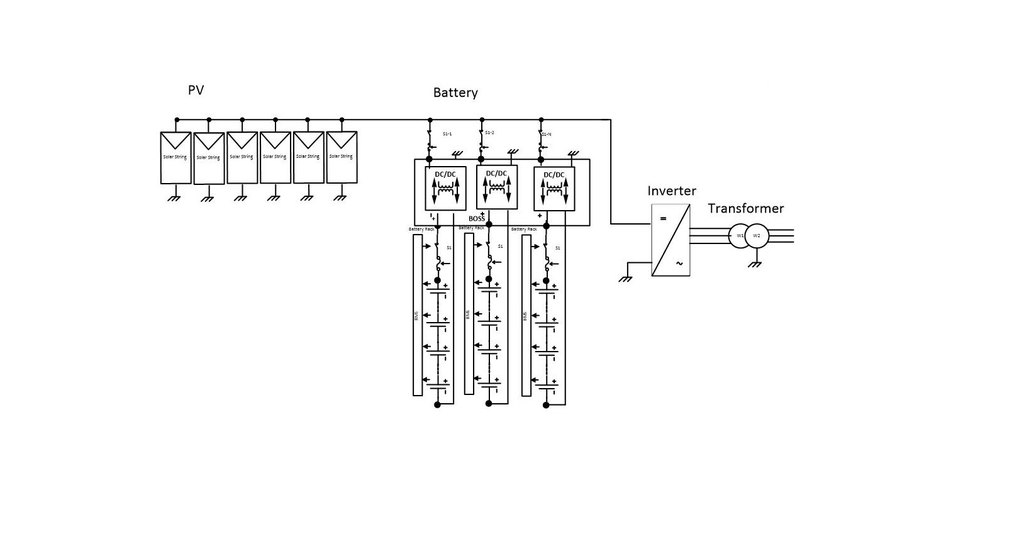
Minimizing Fault Currents in Large Scale Storage Deployments
How to Improve Safety and Reduce Cost in Large Scale Storage Deployments
As the DC-coupling of solar plus storage moves rapidly from a concept many are discussing and fewer are implementing to a reality where more projects are being deployed, some of the unique technical challenges these deployments present are coming to the fore. One such challenge is the issue of managing fault currents in large battery containers with a number of battery racks.
Battery Fault Currents and Monolithic DC-DC Converters
There are a variety of methods for DC-coupling Solar + Storage. One of the more common methods for pairing multi-megawatt battery containers with large PV fields has been the use of non-isolated, monolithic DC-DC converters to tie batteries onto a DC-bus connected to a PV array. These monolithic DC-DC converters are typically rated between 250 and 500 KW and very much resemble central inverters.
One of the challenges this approach presents is that it requires all the batteries racks in a container to be connected in parallel, where current, and namely fault current, add up.
The lithium ion batteries being used most commonly in large commercial and industrial (C&I) and utility scale solar plus storage projects, when short-circuited, can release an enormous amount of current. Internally batteries consist of several racks of individual cells. When charged or discharged via a monolithic DC-DC converter or battery charger the racks are connected in parallel as shown in Figure 1 below:

Figure 1: A typical DC-coupled Solar + Storage system which couples batteries ot the DC-bus using a non-isolated, monolithic DC-DC converter. Racks of batteries connected in parallel to the output of a monolithic, non-isolated DC-DC converter.
In such a topology, if one of the racks short-circuits, all the other racks collapse upon it, discharging all the energy in a single moment. If this occurs, a hazardous situation may ensue. Avoiding such mishaps requires the installation of appropriate protection devices, such as insuring individual racks are equipped with circuit breakers capable to disconnect the full fault current of the battery container. Such protections of course come at the expense of a project’s economics.
Isolated, Rack Level DC-DC to the Rescue
Here at Alencon, we have developed a galvanically isolated, battery rack level DC-DC converter called the Bi-Directional Optimizer for Storage Systems (BOSS) to address, among others issue, the challenge of reducing fault currents in DC-Coupled Solar + Storage deployments.
The Alencon BOSS provides individual, galvanically isolated DC-DC converters for each rack of batteries. This means that each battery rack is isolated with 2,750 volts of isolation from each other both on the negative and positive terminals. Therefore, if one of the racks fails, no other rack can collapse upon it and cause a fault current. Even when two racks short together in one point, no short current will occur. If somehow the output of a BOSS unit is shorted, only the current from one rack will flow. This current will be interrupted by properly sized fuses on DC-DC output. The BOSS provides unprecedented protection against lithium ion battery fault currents.

Figure 2: The Alencon BOSS isolates the battery from the DC bus (PV and inverter). Additionally, the BOSS isolates individual battery racks from one another.
While the BOSS is modular, and sized to each battery rack, it can be deployed in a variety of form factors to meet the needs of storage integrators and project owners alike. The BOSS can be installed inside a battery enclosure, in a single, 7U, rack mounted unit rated in approximately 80 KW units. These units can also be mounted in either indoor or outdoor rated cabinet as well.

Figure 3: The Alencon BOSS can be used to isolate battery racks but is still deployable in a variety of customer specified form factors.